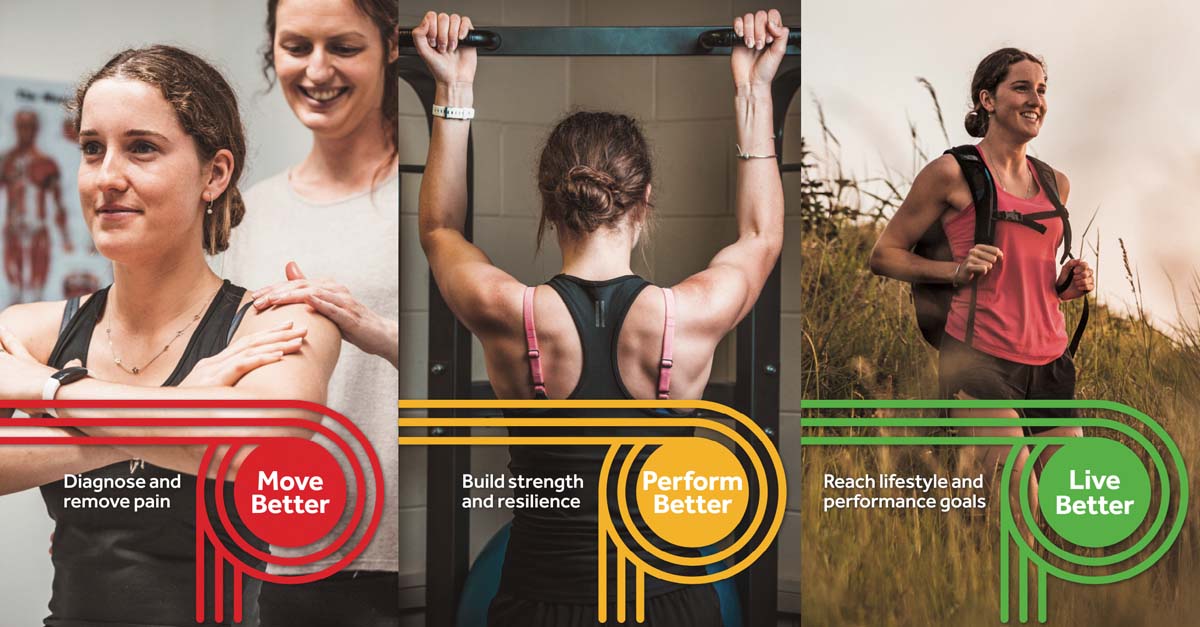Your Pathway
Our priority is providing an accurate diagnosis and effective treatment programme that will focus not only on your immediate rehabilitation, but also a longer-term preventative plan. Combining experience, with the latest professional knowledge, we guide you through a pathway from injury, to performance and wellness.
You’ll notice we have longer appointment times. This is to take the time to really listen and assess, then treat your injury or problem in the best way possible. We’ll work with you to build strength and resilience, and to reach your goals.

Some of the conditions we help with:
Sports injuries
We work across sporting codes, assisting in simple sprains and strains, to the more complex problems associated with trauma or overload training issues.
-
- Running – The most common problem for people starting out running is doing too much too soon. Allowing the time for your joints, tendons and muscles to adjust to the loads that running places through the body is important in preventing injuries.
- Cycling – Traumatic injuries from crashes to overload and bike set-up problems.
- Netball / Basketball – Ankles and knee injuries are common with these sports, often associated with poor jumping and landing technique.
- Kick-boxing – Acute and dramatic injuries as a result of competition and training.
- Tennis / Squash / Racquet sports – Most commonly shoulder and elbow problems but also encompassing hip, knee and ankle issues.
- Football – Some of the common injuries we see from soccer are groin problems, calf and hamstring strains as well as the more serious ACL injuries.
- Dancing – The combined effect of flexibility, strength and repetitiveness associated with dancing and gymnastics can again place undue stress on joints, bones and soft tissues.
- Cricket – Bowling in cricket has a rather unique action and as such can place some unusual forces on the body and lumbar spine in particular.
- Rugby / Touch / League – Due to the dynamic and contact nature of these sports, all sorts of injuries are possible. The most common are the sprains and strains of ligaments and muscles.
- Swimming – The repetitive nature of swimming can often result in shoulder pain, which is most commonly associated with the rotator cuff.
- Skiing and snowboarding – The speed of snowboarding and skiing increases the risk of more serious injuries.
Occupational overuse injuries
Injuries which usually occur gradually as a result of repetitive movements or sustained postures causing pain, stiffness and altered movement patterns.
Office workers and musicians
Similar problems to occupational injuries as a result or poor postural control, repetitive movements and load.
Back / Neck / Shoulder Pain
One of the most common problems we see at the clinic is related to neck and lower back pain. Some common conditions include an acute wry neck, lumbar disc problems or thoracic and rib related pain.
Joint pain
Joint pain covers a spectrum of conditions varying in severity levels. Joint pain can arise from either disease, infection or injury resulting in damage to the joint, loss of movement and at times swelling. Common joint pain diseases include Osteoarthritis, Rheumatoid Arthritis and Gout. Joint pain and dysfunction can also arise from simple sprains and strains which lead to soft tissue injury and loss of movement, which can cause stiff and painful joints – most commonly seen in the neck, back, shoulder and ankle joints.
Pre and Post-natal
Problems occur during pregnancy because of the changes that are taking place in the body, resulting in pain. This can sometimes carry over to the post-natal period, or may in fact occur from the birthing process and the general recovery post birth. Most commonly it is general lower back and pelvic pain but can also involve wrists, hands and neck.
Postural problems and muscle imbalance
Often as a result of loads and stresses placed on the body with sport, hobbies and general workplace postures, we can develop imbalances between muscle groups which can affect how we move and function as well as contributing to pain. Identifying the problem areas enables us to work with you to correct these issues, leading to improved function and a return to previous activity levels.
Post-surgical / operative
We see many post-operative conditions at our clinic with a focus on improving pain, movement and function following surgery. Some common post-operative conditions include ACL reconstruction of the knee, shoulder reconstruction, hip and knee replacements, and post fracture surgery.
Children and adolescents
Children can often experience pain as a result of load from sports and growing bodies. Reducing loads and helping with flexibility and strengthening can help children to overcome these issues, preventing longer term problems.
Individual post cancer treatment rehabilitation (PINC+STEEL)
We have PINC and STEEL therapists as part of our team and they are able to develop individual plans to help assist in your recovery from cancer.



